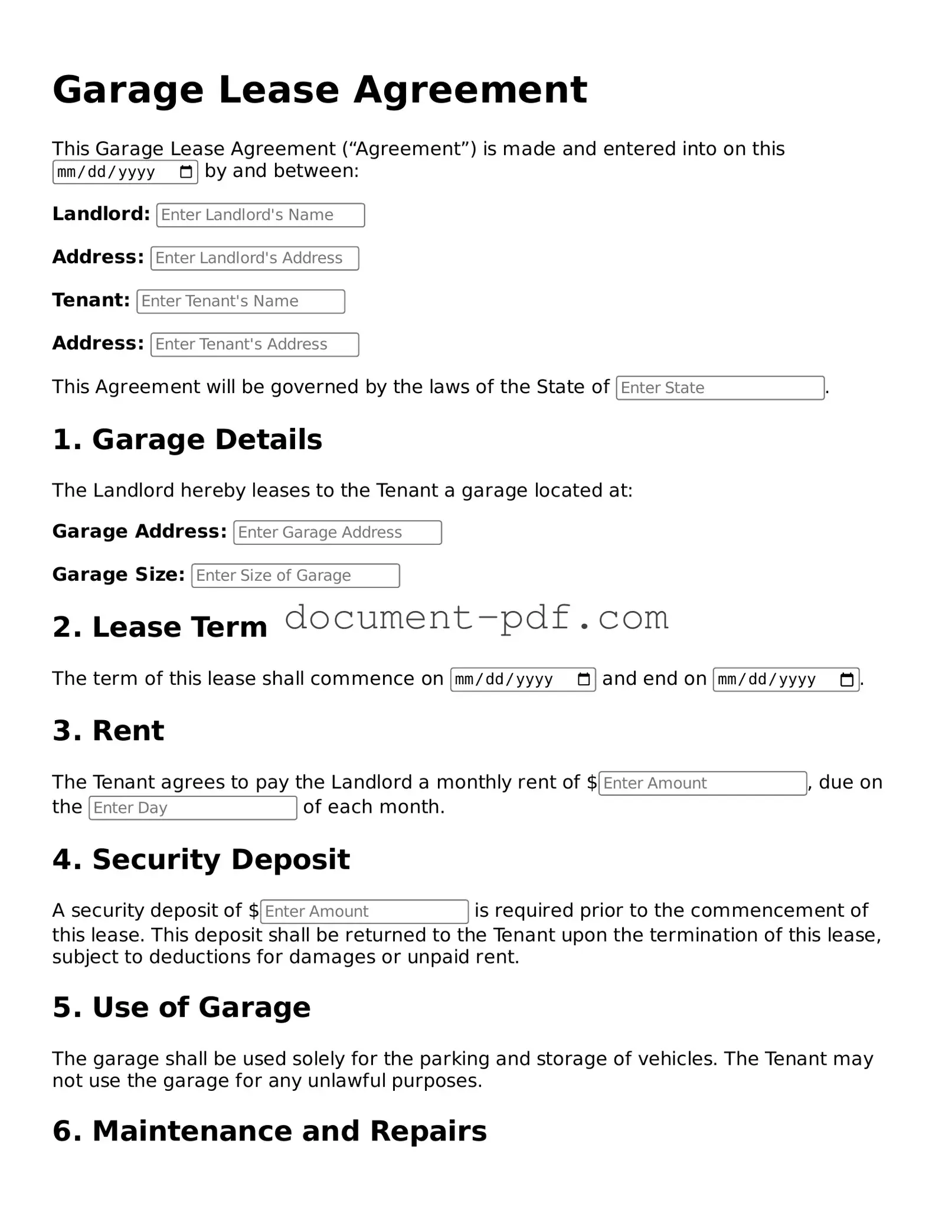Attorney-Approved Garage Lease Agreement Document
A Garage Lease Agreement is a legal document that outlines the terms and conditions under which one party rents a garage space from another. This agreement serves to protect the interests of both the landlord and the tenant, ensuring clarity in expectations regarding rental payments, duration, and usage of the space. To get started on securing your garage lease, fill out the form by clicking the button below.
Access Garage Lease Agreement Editor Here
